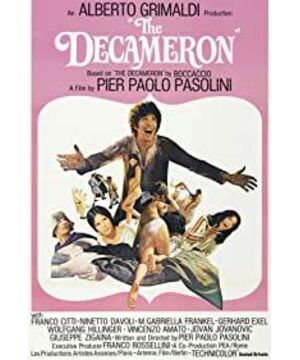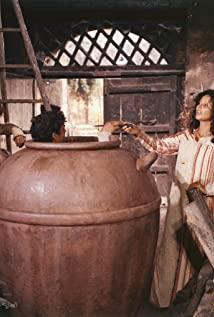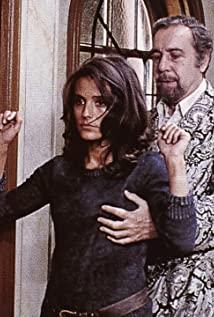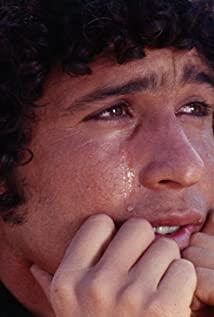Do not reprint
Colin MacCabe / Literary Ambiguity / Translation
When Pasolini decided to adapt Boccaccio's Decameron, it was obvious that his political/ideological road had come to an end. Two of the three previous works: "Theorem" (Teorema 1968) and "Porcile" (Porcile 1969) have portrayed the bourgeoisie far beyond any level of spiritual or ideological salvation. The leftists were convinced that a global revolution was imminent. Pasolini found that the student movement was as entrenched as the bourgeoisie, and he saw no hope in it. He once said that if he had to choose to support one of them in the street fight between middle-class students and working-class police, his sympathy would be with the police from poor families, rather than the spoiled rich children.
Pasolini’s complete frustration with the existing order and student *** has been clearly expressed in "Pigsty": Jean-Pierre Léaud (Jean-Pierre Léaud) plays the troubled German rich man The son, Anne Wiazemsky (Anne Wiazemsky) as his strong girlfriend. When choosing the roles of Leod and Vyazemski, Pasolini was obviously transforming Godard's "Chinese Girl"; the two actors starred in "Chinese Girl", the film announced Mao Doctrine culture began to endorse new hope for left-wing students. However, Pasolini's film did not convey any hope. The bourgeoisie and his opponents have come to a dead end, symbolizing Leod's fate: being swallowed by the pigs.
Soon, out of enthusiasm for adapting the three medieval texts, Pasolini gave up his previous exploration of the deep texture of modern life. His move seemed to be a complete turn to the right. For the Renaissance and Enlightenment, the Middle Ages was an awkward node. It was sandwiched between the classical era shining with the glory of ancient Greece and Rome, and the modern world in which Europa politics ruled the world and reason defeated superstition. Since the beginning of global industrialization, the Middle Ages is regarded as a representative of the previous period of capitalism (TS Eliot was a famous representative), where people rely on their instincts to maintain interpersonal relationships and have not been poisoned by money; a widely recognized belief system As a guarantee of a harmonious social order. It must be pointed out that Pasolini's vision is very different from this conservative vision. "The Decameron" (1971) shows us the body of vomiting, farting, and copulation that was rid of by the process of civilization in the Renaissance. But this is exactly the same as any accurate description of the Middle Ages, in Roman borgate and shantytowns, Pasolini found love and his eventual death. Pasolini connects with his early days through his "Trilogy of Life" ("Decameron" (1971), "Canterbury Tales (1972), "One Thousand and One Nights" (1974)) , But it is not a simple return to the past. He is obsessed with finding a new world, a physical world, outside the fully commoditized capitalist world. By transplanting the marginal people of the modern world (Italy settled down, the Third World) into medieval texts, Pasolini hopes to create a substitute to replace the present that disgusts him even more.
His first source of inspiration was "The Decameron", which tells the story of ten young nobles who fled the plague-ravaged Florence and sought refuge in the countryside. In order to kill time, they told ten stories each day for ten days, a total of one hundred stories. This book was written in the 1350s and is one of the founding texts of modern Europe. It uses the influential Italian at the time, rather than the culturally recognized Latin. Pasolini simplifies the adaptation process. First of all, he completely abandoned the overall framework and put us in a fluid world, where the stories merged with each other, sometimes interrupted by the scenes, and sometimes fluent. The film is officially divided into two parts. Beginning with the first story of Decameron, the stubborn Ciappelletto confessed on his deathbed, persuading the priest to believe that he is a saint. This story is not like the independent story told by Boccaccio, but incorporates other stories in the book, two of which are obvious: the story of Masetto and the nuns, who pretends to be a deaf and mute Into the convent; the story of Peronella, because her husband went home early to interrupt her affair, she lured her husband into a large clay pot so that she could continue to affair.
After Ciappelletto's death, the film turned to Pasolini, who appeared in the film as a painter, as "Giotto's best apprentice", [1] he was commissioned by the monastery to work south. In the narration of the subsequent story, he made corresponding comments by drawing murals, which constituted the second part of the film. In the part of shooting and drawing murals, the film encountered complex technical challenges in setting up scaffolding and painting paints, but the artist team still created a movie scene similar to the medieval world of the movie. Pasolini's "Medieval" concept of film is in line with Giotto's concept in form and content. Before perspective was mathematicalized, Giotto had already started his painting career. For him, perspective was just one of many methods of painting. Pasolini tried to use the technique (film production) dominated by perspective to create montages with different perspectives and different levels. In this way, the movie we watch is a mural.
Pasolini's freedom to create Decameron was not restricted by the reduction of the story frame or the reduction from one hundred stories to ten stories. He also changed the location of the story, from Florence to Naples. An important aspect of this transformation is the replacement of the Florentine Tuscan dialect, which Boccaccio has set as the national standard, with the unfavorable Neapolitan dialect. Pasolini's first poem was written in Friulian. In his works of art, it is his eternal theme that one Italian language dominates other languages. Likewise, he firmly believed that in this country, the rule of the North enslaved the South. If Florence represents the ruling bourgeoisie he hates from the heart, then Naples represents the hopeful and vigorous uncivilized lower class.
In keeping with the change of location, Boccaccio's story is also given a class shift. The stories about kings and nobles in "Decameron" are excluded. Even Riccardo and Caterina, the moving story of the bewildered lover being forced to marry, has been adapted. Katrina's father is a knight in Boccaccio's story, and in the movie he becomes a businessman. Similarly, in "Isabella, or The Pot of Basil" (The Pot of Basil), Isabella's lover, who was brutally murdered by her brothers, was originally a native of northern Italy and became a Sicilian here.
These clues explain how brilliant Pasolini's palette is, but the charm and vitality of the film does not rely solely on these common sense. It would be a mistake to underestimate this film and even the entire trilogy, and underestimate the director's efforts to recreate life in the Middle Ages rather than just a show. The core of the film is to portray the conscious pre-modern body. The audience can extract two details from "Decameron": teeth and sex. The faces presented on the screen are always so positive that the audience can't ignore the characters in which they are. It is an era when orthodontists and braces have not yet appeared. The missing teeth brought the audience back to the world that had long been far away. Similarly, sex does not show romance or elegance, but the simplicity and innocence that people do not realize in the film. Just as the nuns in the garden have thoughts, they want to explore the physical pleasure of the deaf-mute gardener through simple direct contact.
"The Decameron" is the first film of Pasolini's "Trilogy of Life", which calls a world free from bourgeois hypocrisy and capitalist exploitation. As in the last shot of the film, the apprentice of Giotto played by Pasolini murmured to himself, lost in thought, intending to realize his ideal vision.
Note: [1] Giotto, the founder of the Florentine School, is also one of the pioneers of the Renaissance.
View more about The Decameron reviews











